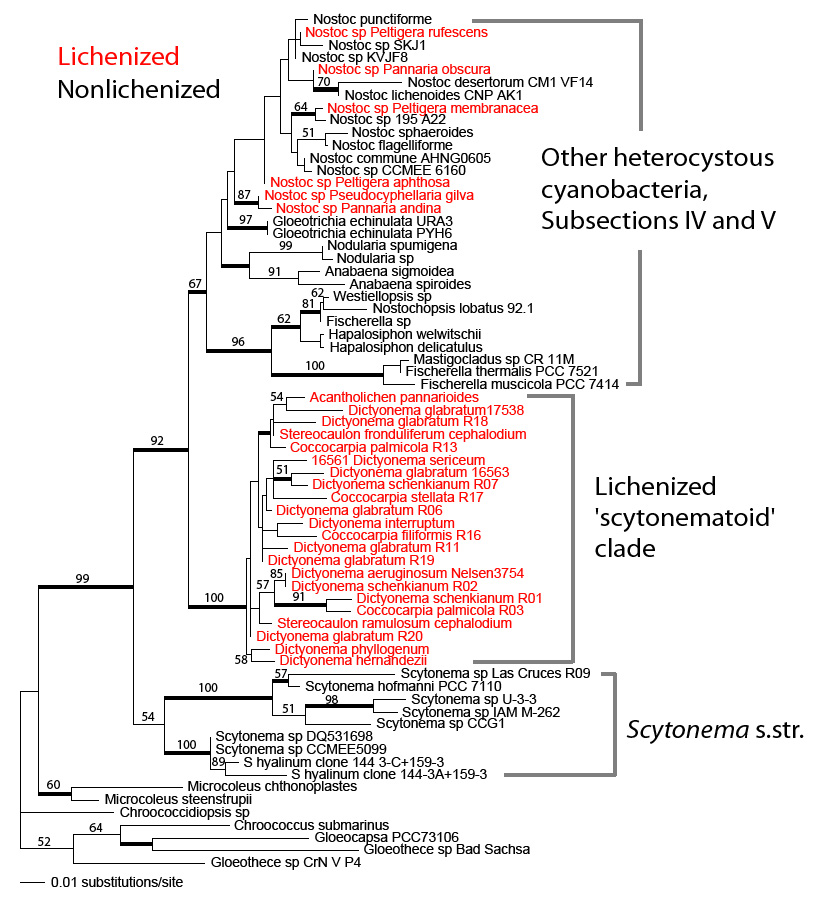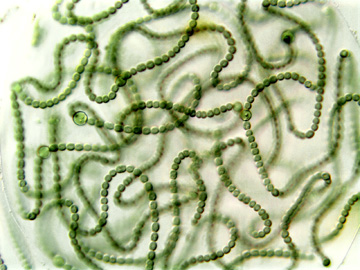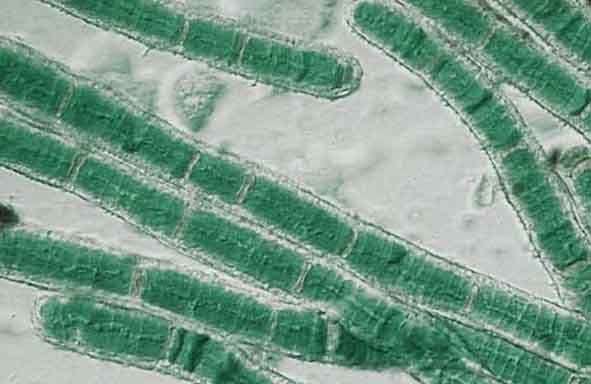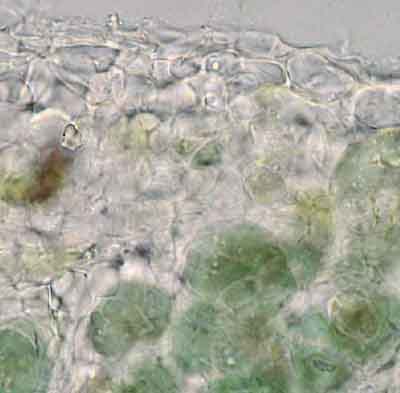|
|
|
|
|
||||
|
|
Lawrey Lab
|
||||
Current
Research Projects - Cyanolichens:
Approximately 10% of all
lichens form associations with cyanobacteria, an ancient and diverse group of
photosynthetic bacteria. Cyanobacterial classification has traditionally been based on morphology, but recent use of molecular data, principally 16S rRNA sequences, is beginning to shed new light on the evolution of the group. Based on morphological identifications, the most common cyanobacterial photobionts in lichens were assumed to be members of the genera Nostoc, Scytonema, Stigonema, Calothrix, Dichothrix, and Chroococcidiopsis. These estimates were preliminary, however, since very few lichen cyanobacterial photobionts have been isolated in culture or sequenced to confirm identifications. Recent sequencing studies indicate that morphology is not always a reliable indicator of evolutionary history. In our lab we are investigating the diversity and evolution of cyanobacterial photobionts of cyanolichens, focusing on those assumed to contain Scytonema or Scytonema-like forms, which have never before been sequenced.. These investigations have led to the discovery of a remarkable clade of cyanobacteria that appears to be entirely lichenized. This 'scytonematoid' group is mostly tropical and genetically distinct from all other heterocystous cyanobacteria. In addition, phylogenetically unrelated lichens appear to 'share' the same photobiont types, which suggests an evolutionary history not unlike that observed in crop plants whose history is shaped by domestication. We are now sampling and
sequencing other cyanolichens from the Neotropics,
including the |
|
||||
|
|
|
|
|
||
|
|
|
|
|||
|
|||||





